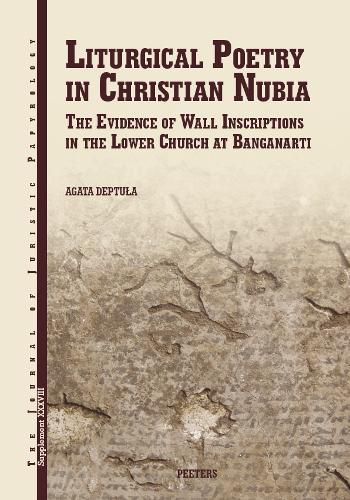Readings Newsletter
Become a Readings Member to make your shopping experience even easier.
Sign in or sign up for free!
You’re not far away from qualifying for FREE standard shipping within Australia
You’ve qualified for FREE standard shipping within Australia
The cart is loading…






This book provides an editio princeps of the 29 Greek inscriptions
discovered on inner walls of the Lower Church in Banganarti (modern
Sudan). They were executed between the middle of seventh and turn of
tenth-eleventh century and form a fascinating and diverse group, which
allows a closer look at many aspects of the history and culture of
Christian Nubia. They include texts containing single proper names, as
well as longer texts supplying information on historical events and
throwing light on the spiritual and ritual life of the Christian community
in Nubia. The most remarkable group of texts was placed in one room
located exactly opposite to the apse. The inscriptions found there form a
homogeneous group with all texts comprising liturgical hymns. Among the
texts, one can distinguish a liturgical canon and structural hymn for the
begging of Lent, another canon for Lazarus Saturday, a series of short
troparia connected with the Palm Sunday procession and a list of hymns and
psalms incipits. Those texts significantly enlarge the modest collection
of liturgica known from Christian Nubia; therefore their analysis
in a broader context is an essential part of this book.
$9.00 standard shipping within Australia
FREE standard shipping within Australia for orders over $100.00
Express & International shipping calculated at checkout
This book provides an editio princeps of the 29 Greek inscriptions
discovered on inner walls of the Lower Church in Banganarti (modern
Sudan). They were executed between the middle of seventh and turn of
tenth-eleventh century and form a fascinating and diverse group, which
allows a closer look at many aspects of the history and culture of
Christian Nubia. They include texts containing single proper names, as
well as longer texts supplying information on historical events and
throwing light on the spiritual and ritual life of the Christian community
in Nubia. The most remarkable group of texts was placed in one room
located exactly opposite to the apse. The inscriptions found there form a
homogeneous group with all texts comprising liturgical hymns. Among the
texts, one can distinguish a liturgical canon and structural hymn for the
begging of Lent, another canon for Lazarus Saturday, a series of short
troparia connected with the Palm Sunday procession and a list of hymns and
psalms incipits. Those texts significantly enlarge the modest collection
of liturgica known from Christian Nubia; therefore their analysis
in a broader context is an essential part of this book.